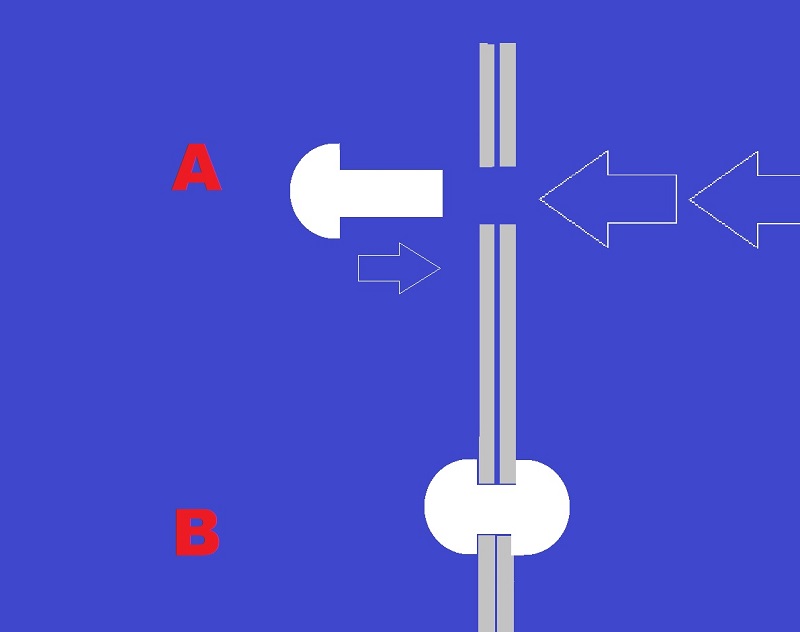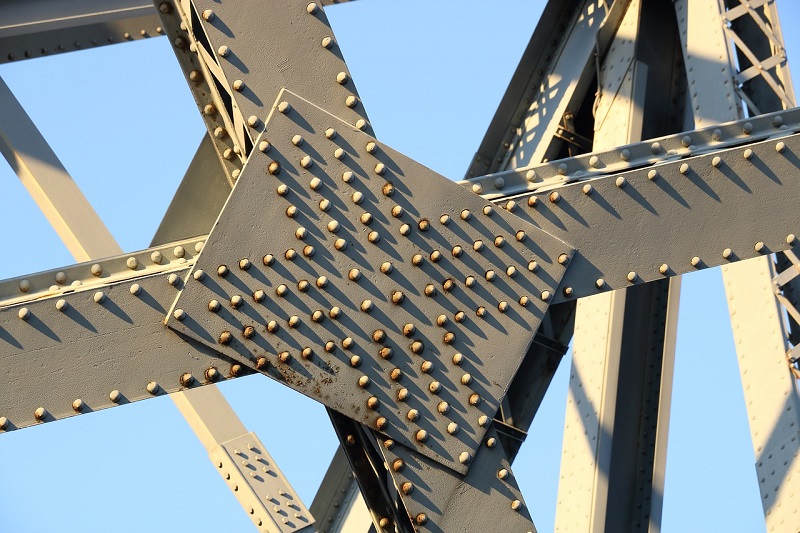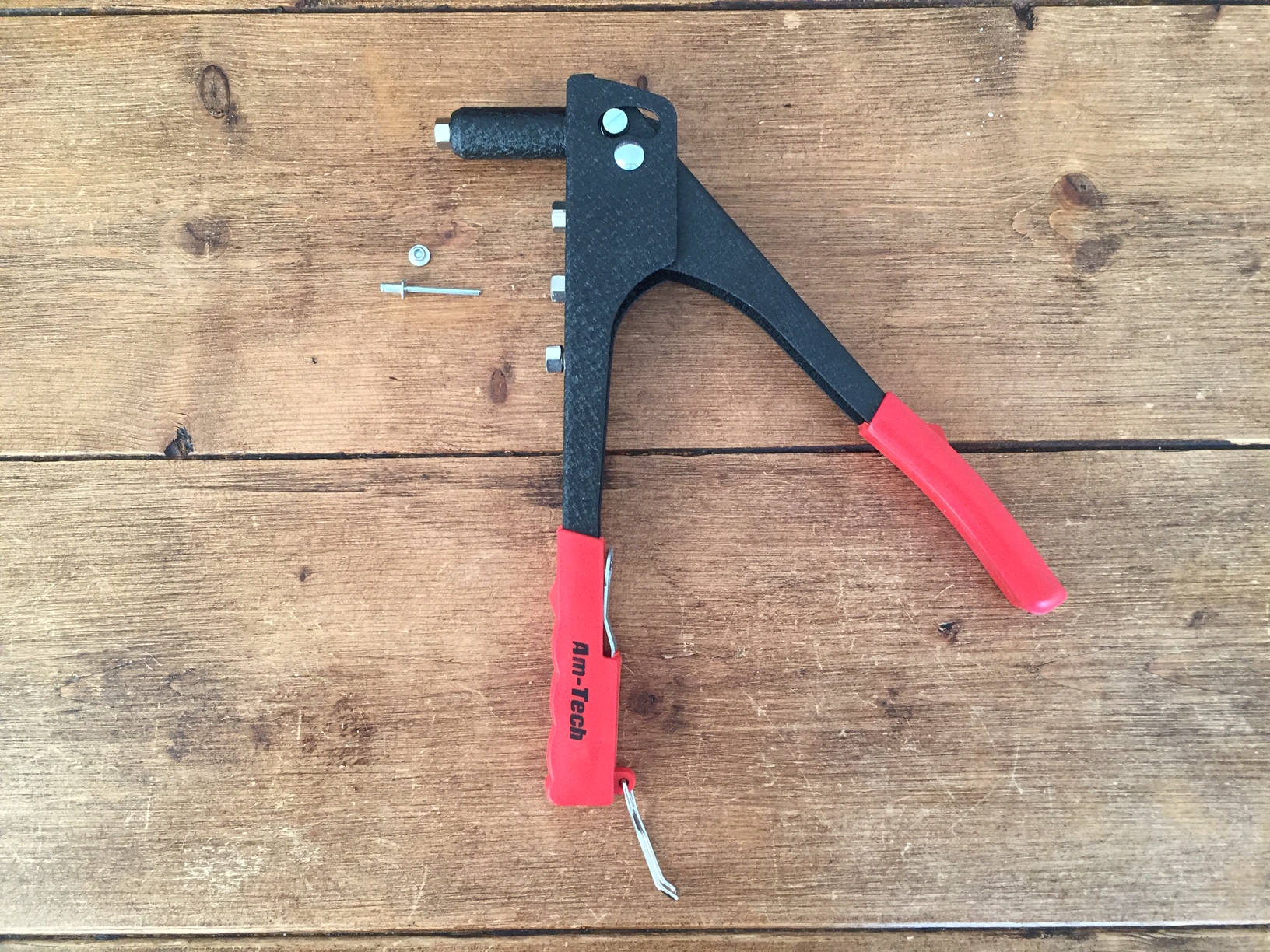Rivet

|
A rivet is a mechanical fastener for making a permanent join between two or more metal sheets. Riveting is the act of fastening or securing two plates with one or more rivets. The rivet comprises a shank with a plain end (or tail), and a head on the other end. The rivet has proved to be one of the most reliable and safe means of fastening, forming a permanent and structurally robust join.
The process of riveting (or making a riveted joint) comprises making a whole in say, two metal plates, aligning the hole, then inserting the rivet through it with the plain end projecting through (‘A’ in the diagram). Hammering the projecting tail end of the rivet causes it to mushroom, expanding by around 1.5 times its original diameter, causing a head to form (‘B’) which secures the rivet and the join permanently. The final shape of the rivet is therefore similar to a dumbbell, with the original head called the factory head and the new tail end called the shop head (or buck tail). The finished rivet can support shear and tension loads.

|
Historically, riveting has been widely used in shipbuilding, bridge building and other areas where steel infrastructure was involved. It was also used in construction but nowadays rarely performed on site but more in the factory, if at all. Typically, this might have been for riveting connecting cleats to steel stanchions and beams, with the final assembly bolted together on site.
Much of the site riveting that took place in construction has been replaced by welding or bolting (bolts typically have the same strength as rivets). Aircraft manufacture makes widespread use of riveting throughout the frame and wings of the plane which can typically require hundreds of thousands of rivets.
Manual hammering is one way of securing a rivet, however in recent times other methods are used to perform the same task and include the use of a hydraulic- or pneumatic-powered air hammer, a rivet gun or a rivet crimping tool. The latter allows the riveting process to be undertaken by one person. Usually, access is required on both sides of the rivet which is why riveting has traditionally been a two-person operation. Where access to the rivet is only possible from one side, the traditional rivet is replaced by a ‘blind rivet’.

|
| Rivet gun and rivets. |
Today, structural steel in construction is mostly assembled using high-strength steel bolts. This is mainly because a bolted connection is cheaper to make than a rivet as it requires lower-skills and fewer workers to complete. Bolts can also be undone.
[edit] Related articles on Designing Buildings
Featured articles and news
Latest Build UK Building Safety Regime explainer published
Key elements in one short, now updated document.
UKGBC launch the UK Climate Resilience Roadmap
First guidance of its kind on direct climate impacts for the built environment and how it can adapt.
CLC Health, Safety and Wellbeing Strategy 2025
Launched by the Minister for Industry to look at fatalities on site, improving mental health and other issues.
One of the most impressive Victorian architects. Book review.
Common Assessment Standard now with building safety
New CAS update now includes mandatory building safety questions.
RTPI leader to become new CIOB Chief Executive Officer
Dr Victoria Hills MRTPI, FICE to take over after Caroline Gumble’s departure.
Social and affordable housing, a long term plan for delivery
The “Delivering a Decade of Renewal for Social and Affordable Housing” strategy sets out future path.
A change to adoptive architecture
Effects of global weather warming on architectural detailing, material choice and human interaction.
The proposed publicly owned and backed subsidiary of Homes England, to facilitate new homes.
How big is the problem and what can we do to mitigate the effects?
Overheating guidance and tools for building designers
A number of cool guides to help with the heat.
The UK's Modern Industrial Strategy: A 10 year plan
Previous consultation criticism, current key elements and general support with some persisting reservations.
Building Safety Regulator reforms
New roles, new staff and a new fast track service pave the way for a single construction regulator.
Architectural Technologist CPDs and Communications
CIAT CPD… and how you can do it!
Cooling centres and cool spaces
Managing extreme heat in cities by directing the public to places for heat stress relief and water sources.
Winter gardens: A brief history and warm variations
Extending the season with glass in different forms and terms.
Restoring Great Yarmouth's Winter Gardens
Transforming one of the least sustainable constructions imaginable.






















